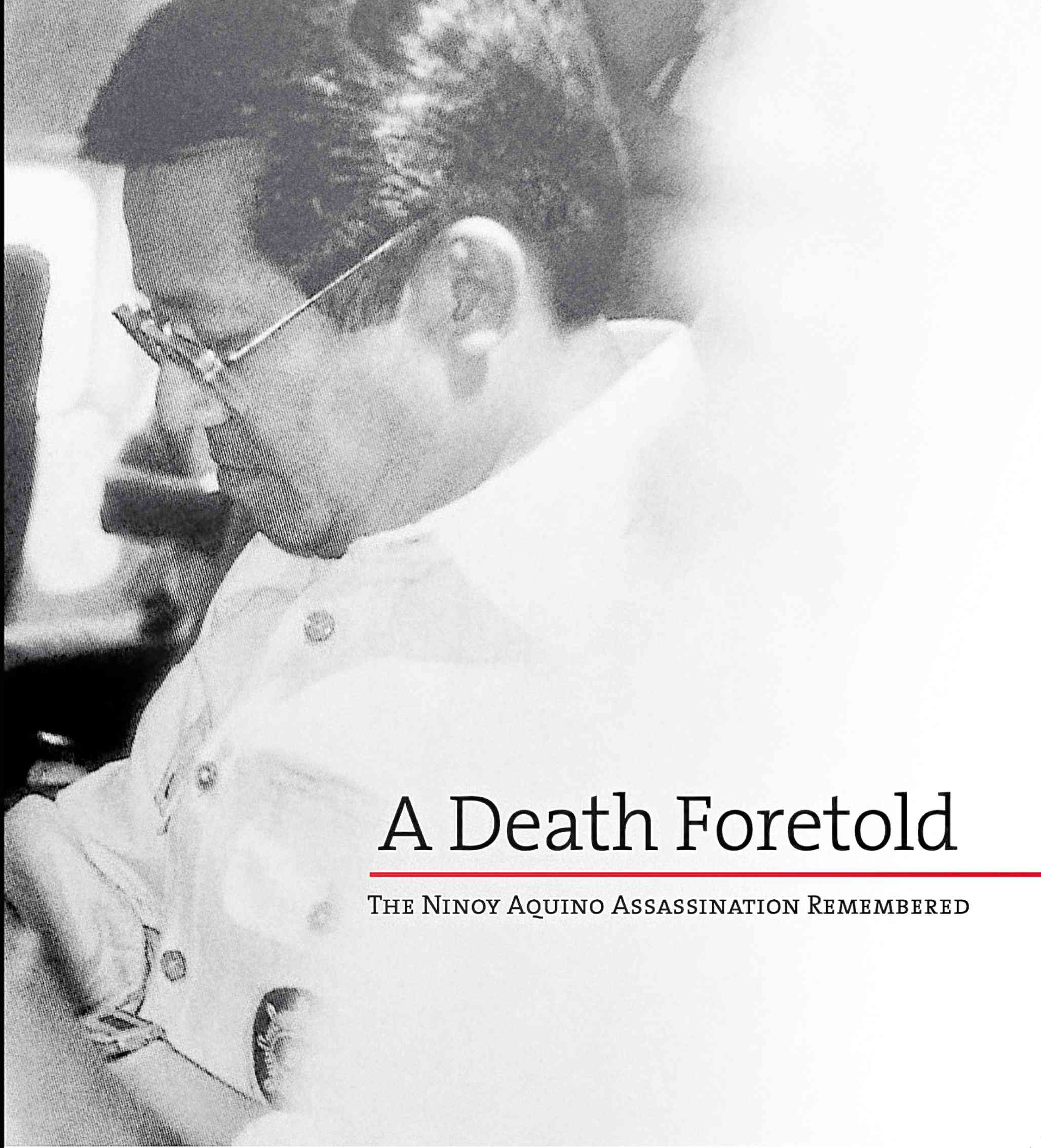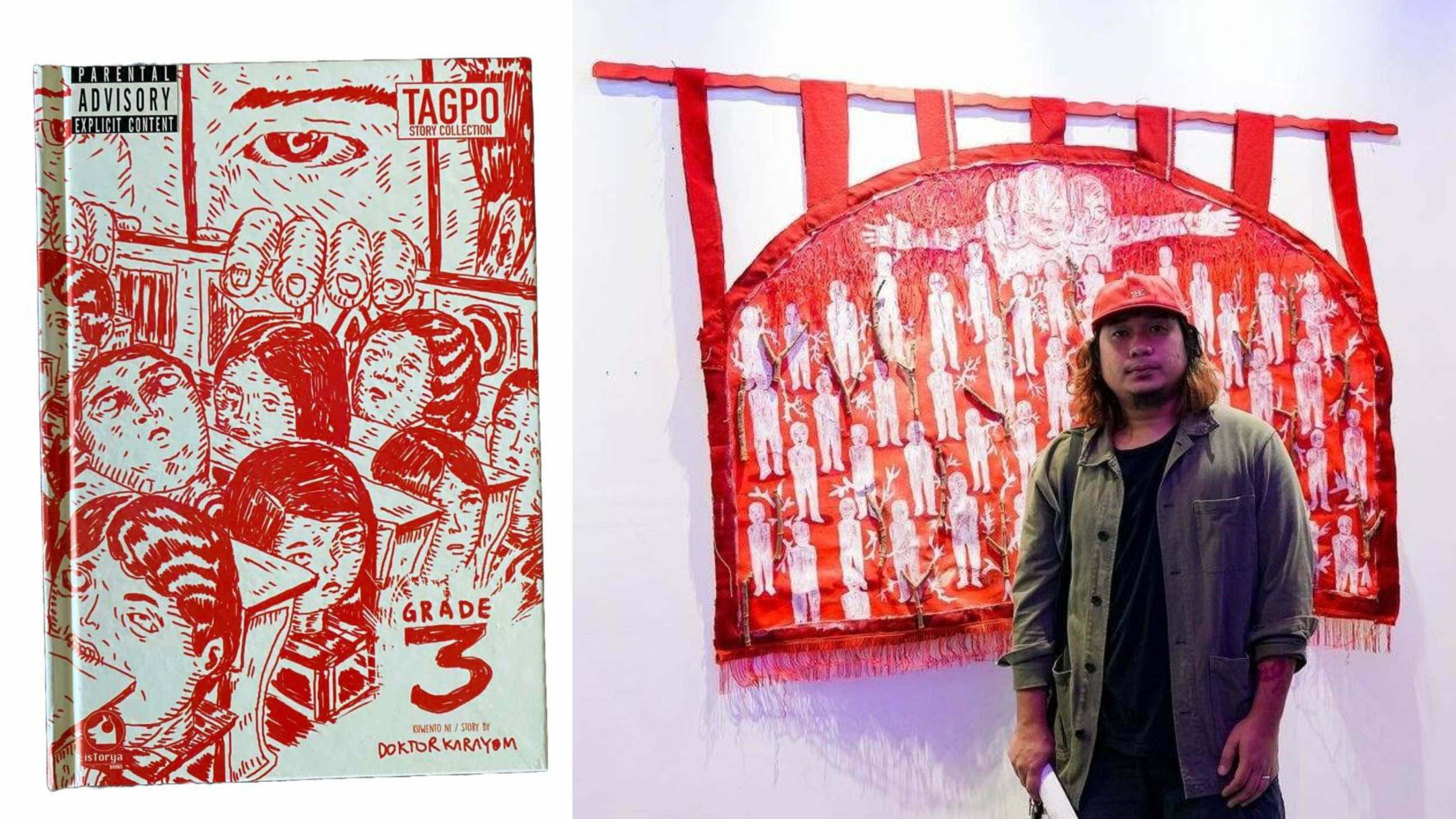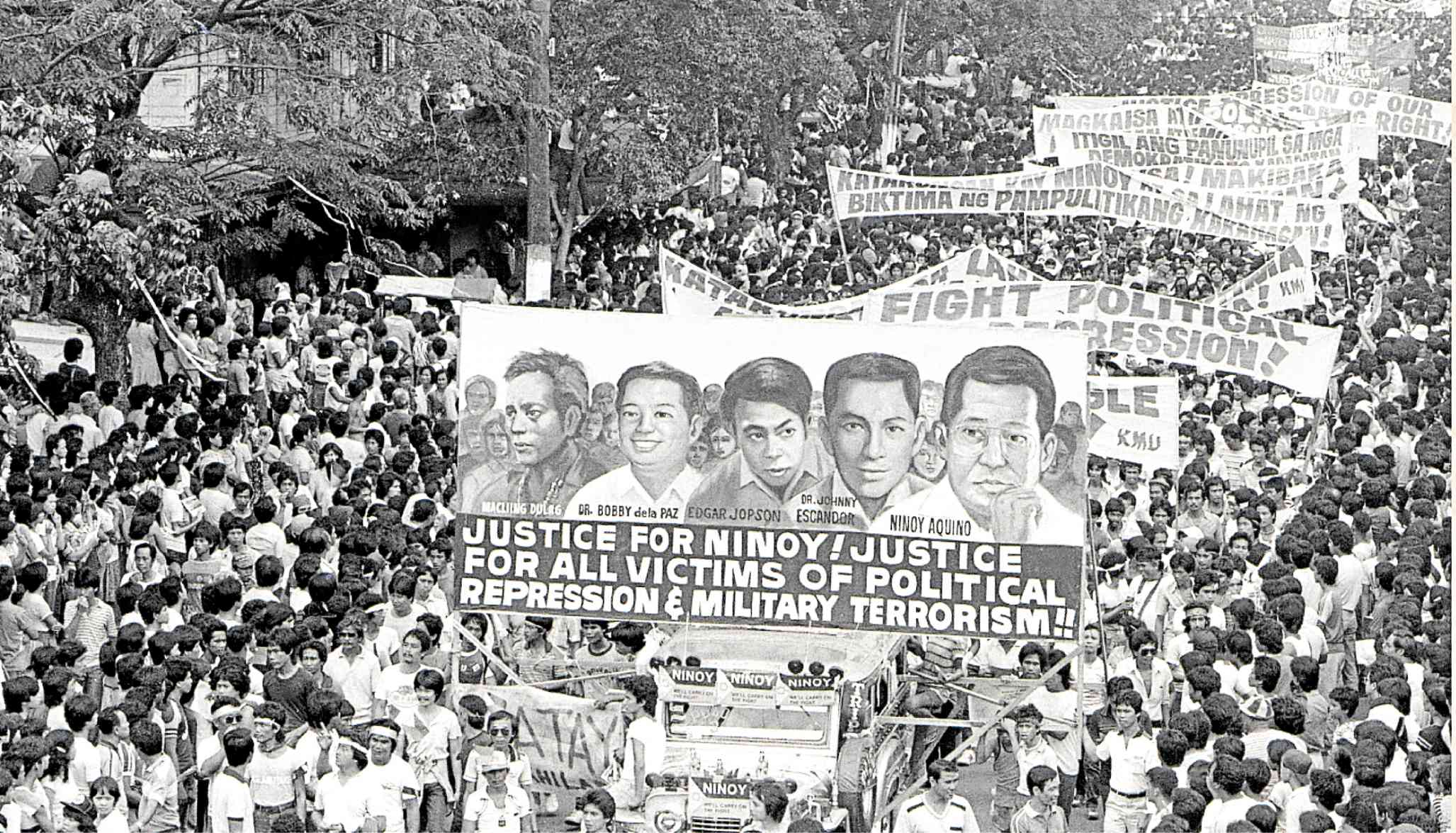
1984. —CONTRIBUTED IMAGES
Yet another book on the Ninoy Aquino assassination? What else is still not known about it? What new thing can one say? Is there anything still left unsaid?
For many of us, Aug. 21, 1983 is a date etched in our memory—a day when the country stood still, dumbstruck at the brazenness of a murder committed in broad daylight. Yet somehow fueling hope that the end was near for the prevailing Marcos dictatorship.
To those who were not around in 1983 and only know the date as a bit of Philippine holiday in contemporary times, the victim Ninoy Aquino may just as well be one of the martyred to be relegated to dusty history pages.
But such cannot be the case especially for someone like Ninoy who turned his back on the comforts of a relatively serene family life in America because he loved the country enough to return home on his own free will. One may wonder, do such heroic individuals still exist?
Obviously, the team behind “A Death Foretold: The Ninoy Aquino Assassination Remembered” (published by Aurora Oreta and Good Intentions Books, 2023) and its general editors Sarge Lacuesta, An Mercado-Alcantara and Mookie Katigbak-Lacuesta strongly felt this was a story worth repeating, certainly worth remembering.
Aurora Oreta, the publisher of the book, is the daughter of Antolin M. Oreta Jr. and the late senator Tessie Aquino-Oreta, Ninoy’s youngest sibling. She wanted the book to commemorate the 40th death anniversary of Ninoy.
Many voices
Speaking in behalf of her coeditors, Katigbak-Lacuesta says: “ We didn’t feel that we had something new to say about Ninoy. We did, however, feel the need to write about Ninoy’s life as historically as we could, without his legend looming large and getting in the way of providing an accurate account of his life and career. We wanted to stick to the facts to inform and contextualize the accounts of the many voices present.”
In the Historian’s Note by Dr. Jose Maria Edito K. Tirol, assistant professor of history at the Ateneo de Manila University, Tirol emphasizes that the book is not to solve the intriguing murder mystery nor to stir any political controversy. The book steers away from all that: “By collecting memories in the form of testimonials, whether sympathetic or not to the late senator and the cause he represented, at the end of the day, Ninoy’s life is worth remembering. And so long as even one Filipino chooses to remember, Ninoy’s death will not have been in vain.”
At the launch where columnist Manuel L. Quezon III was the main speaker, he began with what he warned the audience about as something very unpleasant. It was journalist Sandra Burton’s cassette recording of the chaos and the babble of terrified voices on board Ninoy’s last flight, repeatedly used as testimony. Standing out was Burton’s primal scream which may as well be all of ours at the brazen crime. It is testimony of the attempt to keep reality hidden from everyone. As Quezon says of the revealing words caught on tape, “Words may still free us….” As the words in this new book may similarly do.
The 280-page book of personal memoirs begins with a Reader’s Guide, which leads one to read with ease and convenience. In boldface are context narratives or points of interest to set the specific recollections on the section—really, the meat of the book—more meaningful and appreciated in the proper light.
The oral history format was adopted to capture how Filipinos reacted to the assassination.
For instance, in the initial pages of Ninoy’s early life as remembered by his brother Paul, it begins with a short paragraph on Ninoy’s early years.
The narrator and other voices are described with “Who we were in 1983” and at the bottom of the account, “Who we are today.” The voice may have been a student in 1983 and today, a retired advertising executive.
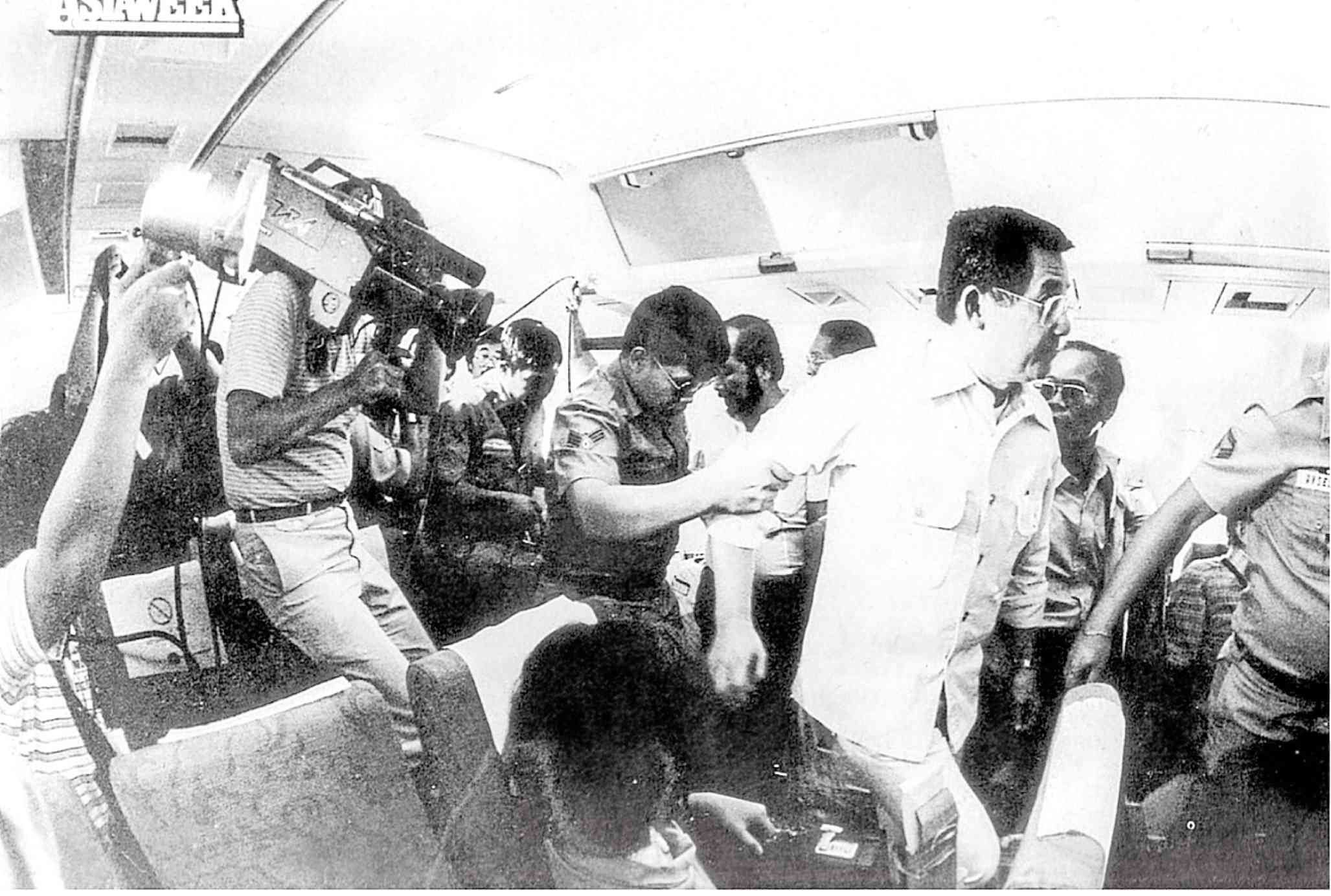
Murder mystery
Another meaningful help for the reader is the timeline of events running at the bottom of every page. It begins with Nov. 27, 1932, the initial entry, to 1950 when Ninoy, at the age of 17, becomes a Manila Times war correspondent in Korea, to 1951 when newly elected President Ramon Magsaysay sends the then 18-year-old as his emissary to negotiate with Luis Taruc. What a thorough and comprehensive sweep at a glance!
Thus, the reader is given both personal and historical narratives to interact with.
Divided into 10 chapters with no-nonsense succinct one-word titles, these also serve as a well-thought-out guide. These are Politico, Prisoner, Exile, Balikbayan, Arrival, Aftershock, Aftermath, Martyr, Ignite, Insights. After the Chapter 8 “Martyr” pages follows the special section “Facts: The Findings of the Agrava Board.”
To this day, what the editors refer to as “the greatest lingering murder mystery in our country’s history” remains unsolved. They do not offer speculations nor answers. Sociologist and columnist Randy David says on the matter: “Nobody really confirmed anything about the mastermind. That’s the most frustrating thing. I think one time, Cory was asked just before she died, ‘Have you confirmed who killed Ninoy?’ She said, ‘I know, but what for?’”
In the same section is the recollection of Rosario Olivas, lawyer-daughter of Major Gen. Prospero A. Olivas. “Scapegoat. That was the word that came to mind when I heard my dad’s voice over the radio saying that Sen. Ninoy Aquino was shot upon arrival at the airport. It was a slow, sad voice. And it was the start of a difficult seven-year journey for our family.”
This is a well-produced book, showing much attention to every detail of the production. The title “A Death Foretold” aptly captures all the sentiments surrounding Ninoy’s homecoming. Yes, it was a stubborn decision he had made because he felt he had to be on Philippine soil, even in detention, and not a freedom fighter thousands of miles away on another continent. In one of his final interviews with then ABC News journalist Jim Laurie, he had said, “Assassination is part of public service … We all have to die sometime. If it is my fate to die by an assassin’s bullet, so be it. But I cannot be petrified by inaction or fear of assassination.”
There were direct warnings from Sen. Pepe Diokno, Jaime Cardinal Sin, even then-first lady Imelda Marcos and then-Defense Minister Juan Ponce Enrile. Even as Cory made a vain attempt to discourage the trip, Ninoy reminded her that they had discussed this so many times before. He himself had foretold his possible death in many interviews, yet that could not be the worst scenario, he thought. Typical Ninoy, who at worse, expected to be herded back to detention: “They won’t kill me because why would they want to make a martyr out of me?”
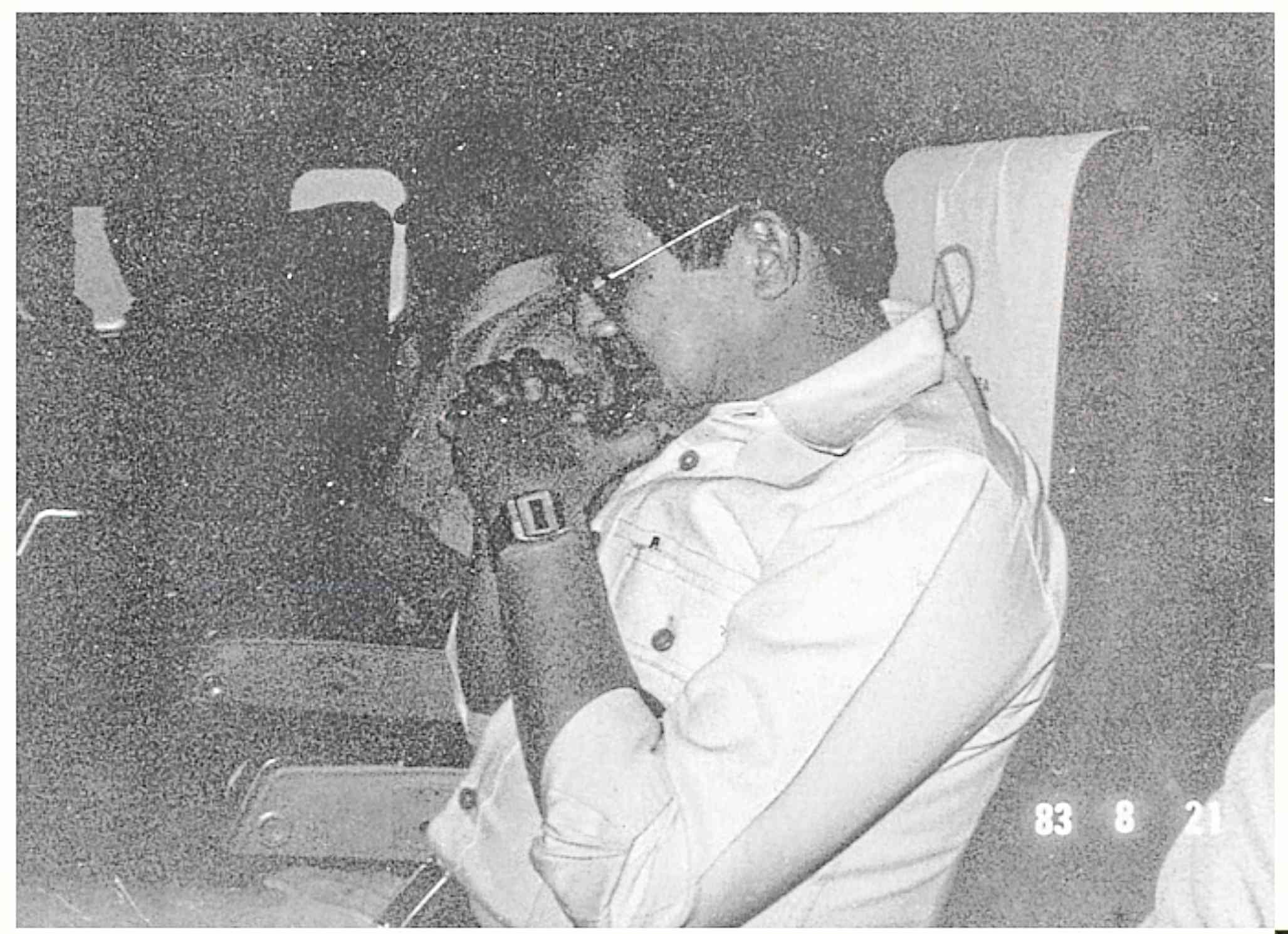
Different voices
Interviews were conducted to collect 150 different voices of individuals who were there when it happened or were far away or politically allied, opposed or even indifferent. This was meant to be a cross-section of representation for a more comprehensive picture. Both painstaking and rewarding was the task of analyzing these comments and blending them, using a data analysis platform, into the appropriate timeframes. Diversity of opinion, background, age was sought.
The account is rich with bite-sized historical facts, which today’s readers, especially teachers and students, would find extremely helpful. Nothing that smacks of the traditional history lesson, more similar to interesting feature tidbits.
Also impressive is the collection of photos. Though many are familiar, so many others are so stirring and laid out in a most dramatic way, the better to linger in the readers’ consciousness. Used as full-sized page breakers are photos that truly speak more than a thousand words. The cover photo itself is eloquent, capturing a pensive Ninoy on his final flight home.
Another full spread is devoted to the mosquito press—the small independent publications that tirelessly reported the true state of the times that the national dailies, the mainstream media, were not allowed to cover. These were Ang Pahayagang Malaya, Mr. & Ms. Special Edition, the Philippine Collegian, Veritas and We Forum.
A full spread was needed to capture the throngs in attendance on the 30-kilometer procession from Sto. Domingochurch to the Manila Memorial Park in Parañaque, a trek that took nearly 11 hours.
And yet, the government-controlled mainstream media bannered the death of two by lightning, with nary a mention of the massive crowd at the funeral procession.
The Luneta grandstand rally photo calling for the boycott of the 1984 Batasan elections captures the massive turnout of supporters.
A last full-spread colored photo has yellow as the dominant color at the “Tagumpay ng Bayan” rally on Feb. 16, 1986, after the presidential snap elections. Cory Aquino protests against electoral fraud and claims victory for the opposition.
The recurring images of Ninoy’s bloodied jacket continue to haunt, even today, 40 years after. Not to mention his bruised facial image with the distinct bullet exit wound on his chin that his mother Doña Aurora Aquino did not want cleaned up so that all would see how Ninoy was badly treated.
Transformed
Also painfully unforgettable are the comments on how Ninoy’s demeanor immediately changed when the soldiers came for him on the plane. Chuck Crisanto, executive director of the Human Rights Violations Victims’ Memorial Commission, talks of how he watched a video of that moment. “He was smiling, he was joking … But there’s that one second when he rose from the seat accosted by the soldiers, I saw his face change. You know, seeing that transformed me … Because at that second, Ninoy Aquino knew he would be shot… No dramatics from Ninoy. He stood up and calmly walked. I was so transformed by his courage.”
Even his son, the late President Benigno “Noynoy” Aquino III, had said of that final moment: “There’s this picture of my dad when he was first approached by one of the people who took him from the plane. He was seated, he had this smile, how do you describe it? The smile was indicative of something like acceptance of fate. He lost that when one of the people patted his back. We took it to mean that they were checking if he was wearing a bulletproof vest.”
The final entries in the historical timeline read: “Aug. 31, 1983, 9:30 pm.
“Ninoy is laid to rest at the family mausoleum in the Manila Memorial Park. His many journeys have come to an end. But all the hard questions regarding the assassination remain.”
In a sense, the reader has journeyed with Ninoy Aquino on this, his final journey home. The narration, the memoirs, the timeline, the photos have allowed that sharp sense of participation and involvement. And fittingly, the book ends with Sen. Benigno Aquino Jr.’s arrival statement, meant to be delivered before his welcomers at the Manila International Airport on Aug. 21, 1983.
And indeed, Ninoy Aquino became a martyr. Truly, it was in death when Ninoy Aquino has made all the difference.So what is the value in all this remembering? Many questions remain regarding the assassination, but it still stands as a compelling story that must be told over and over again. For today’s generation only sketchily knows of the chilling event with untold repercussions. As Aquino grandson Jiggy Cruz recounts, he wasn’t even born yet when his Lolo Ninoy was killed.
Unaltered truth
As the editors wrote in the Introduction, “Recollection allows deeper insight and reflection. In recalling an event, we cannot help but recall how we felt. In doing so, we preserve the value of human experience, and its ascendancy in speaking the truth.” So the book presents the truth, unaltered and beyond any form of alteration. How can one dispute another’s experience and recollection?”
Especially appreciated is that the voices do not speak in unison, so to speak. Certainly not a collection that builds up to a hagiography or mythical hero-making, for many regarded Ninoy prior to his tragic homecoming with a degree of doubt. Many, in fact, did not think of being at the airport for his Aug. 21 arrival. Isn’t he another Marcos? Is he not from the mold of traditional politicians? Can he really make a difference by coming home—and horror of horrors, might he end up forging a reconciliation pact with the dictator? Were he to succeed Marcos, would he be any different?
A few admitted after that dreadful day that it was time to pack up and leave the country, then deemed no longer safe for a family with young children to grow up in. Fortunately, the assassination had a different effect on many other citizens who felt it was time to work and dream together for the kind of nation Ninoy envisioned.
Chapter 9 “Ignite” tells how lives of citizens were altered and transformed beyond 1983.
This commemorative book has taken a life of its own, a solid historical book to be proud of. Katigbak-Lacuesta comments: “(The book) reminds us that history is a living thing that perpetually instructs us.”
My close reading of this book, especially in a month that brings back unwanted unpleasant memories of camp detention and overseas exile because of martial law, reminds me—and all of us—that we once banded together in the struggle for democracy. And we can certainly do it again.
And so, 40 years after Ninoy Aquino was assassinated, he is gratefully remembered and paid high tribute in this book for sacrificing his life for love of country. Ninoy, hindi ka nag- iisa. INQVisit Good Intentions Books on Instagram to order.

